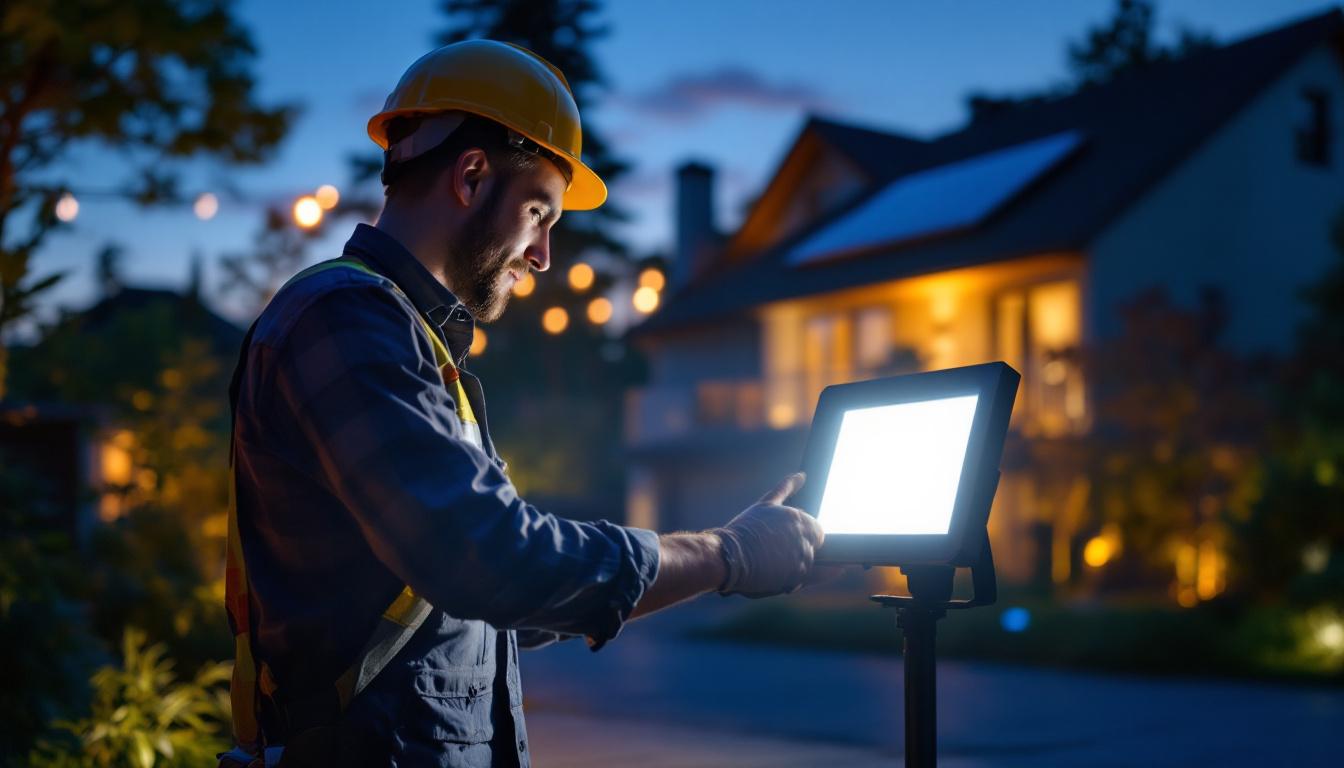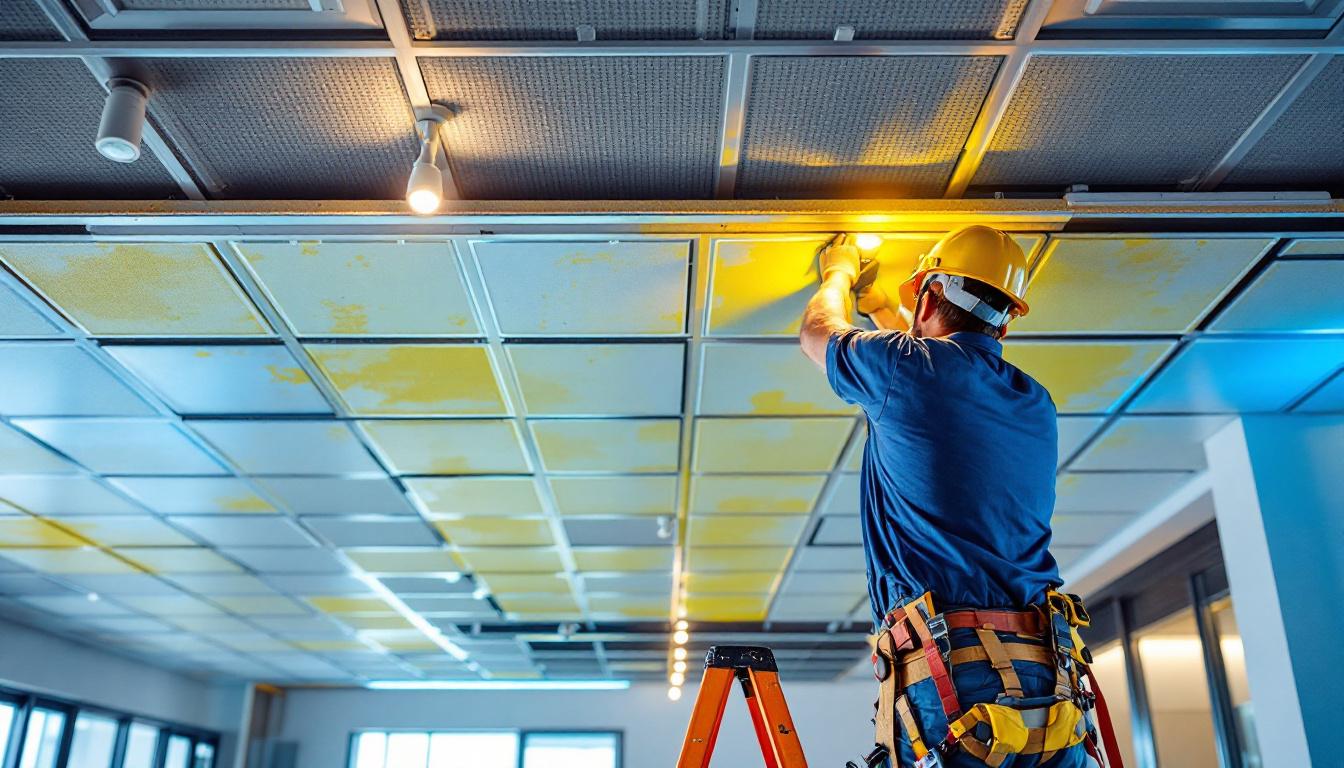
Outdoor LED flood lights powered by solar energy have rapidly become a preferred choice among lighting contractors for a variety of applications. These lighting solutions combine energy efficiency, sustainability, and ease of installation, making them ideal for both residential and commercial projects. As the demand for green building practices rises, mastering solar LED flood lighting is essential for contractors who want to stay competitive and deliver high-quality, cost-effective solutions.
Understanding the fundamentals of solar LED flood lights, including their components, performance metrics, and installation considerations, is the first step toward mastery. This article provides lighting contractors with a comprehensive guide to the top resources and strategies for excelling in this evolving field.
Solar-powered LED flood lights typically consist of several key components: solar panels, LED bulbs, a rechargeable battery, and a controller. The solar panels capture sunlight during the day, converting it into electrical energy, which is then stored in the rechargeable battery. At night, the controller activates the LED bulbs, providing bright, efficient lighting without drawing from the electrical grid. This self-sustaining system not only reduces energy costs but also minimizes the carbon footprint associated with traditional lighting solutions.
Moreover, advancements in solar technology have significantly improved the performance and reliability of these flood lights. Modern solar LED flood lights are equipped with features such as motion sensors, adjustable brightness settings, and remote control capabilities, allowing for enhanced security and convenience. As a result, they are increasingly being installed in various settings, from illuminating outdoor sports facilities and parking lots to enhancing the safety of residential properties. Understanding these innovations can empower contractors to offer tailored solutions that meet the specific needs of their clients while promoting sustainable practices.
The heart of any solar-powered lighting system is the solar panel. These panels convert sunlight into electrical energy, which is then stored in batteries to power the LED flood lights after dark. Contractors should be familiar with the types of solar panels commonly used, such as monocrystalline and polycrystalline, and understand their efficiency ratings. Monocrystalline panels typically offer higher efficiency and better performance in limited space, which can be crucial for urban installations.
Efficiency directly impacts how much energy can be harvested throughout the day, influencing the brightness and duration of the lights. Understanding panel wattage, voltage, and current output helps contractors specify the right system for different project requirements.
LED flood lights are known for their high luminous efficacy, meaning they produce more light per watt compared to traditional lighting technologies. Contractors should evaluate LED chip quality, color temperature, and lumen output to ensure optimal lighting conditions. For outdoor flood lighting, a color temperature between 4000K and 6000K is common, providing bright, clear illumination that enhances security and visibility.
Additionally, the durability of LEDs, often rated by their lifespan (commonly 50,000 hours or more), reduces maintenance costs and downtime, which is a significant selling point for clients.
Since solar energy is intermittent, battery storage is critical for providing consistent lighting after sunset. Lithium-ion batteries are increasingly favored due to their high energy density, longer life cycles, and lower maintenance compared to traditional lead-acid batteries. Lighting contractors should be knowledgeable about battery capacity, discharge rates, and charging cycles to design systems that meet client expectations for reliability.
Advanced battery management systems (BMS) protect batteries from overcharging, deep discharging, and temperature extremes, enhancing safety and longevity. Integrating these technologies ensures optimal performance and client satisfaction.
Proper site assessment is crucial for maximizing the effectiveness of solar LED flood lights. Contractors must evaluate sunlight exposure, shading obstacles, and mounting locations. Tools such as solar pathfinders or smartphone apps can assist in determining the best orientation and tilt angle for solar panels.
Understanding local weather patterns and seasonal sun angles also helps in predicting energy generation and planning battery capacity accordingly. For instance, areas with frequent overcast conditions may require larger panels or additional battery storage.
Installing solar LED flood lights requires attention to mounting height, angle, and structural support. Panels should be securely mounted to withstand wind loads and environmental stress. Flood lights need to be positioned for optimal coverage without causing glare or light pollution.
Contractors should also ensure that wiring is weatherproof and compliant with local electrical codes. Using connectors and cables rated for outdoor use prevents corrosion and electrical faults, contributing to system longevity.
Modern solar LED flood lights often include motion sensors, photocells, and remote control capabilities. These features enhance energy savings and user convenience by activating lights only when needed or adjusting brightness based on ambient conditions.
Lighting contractors should familiarize themselves with these technologies to offer clients customized solutions that improve security and reduce operational costs. Integration with smart home or building management systems can also be a value-added service.
Compliance with electrical and building codes is mandatory for any lighting installation. Contractors must stay updated on standards such as the National Electrical Code (NEC) and local regulations that pertain to solar-powered systems. These codes cover aspects like grounding, wiring methods, and safety requirements.
Additionally, standards from organizations such as the Illuminating Engineering Society (IES) provide guidelines on lighting levels and quality, helping contractors design installations that meet both regulatory and client expectations.
Many governments and utilities offer incentives to promote solar energy adoption, including tax credits, rebates, and grants. Lighting contractors who understand these programs can help clients reduce upfront costs and improve project feasibility.
Staying informed about available incentives requires monitoring updates from energy departments and utility providers. Partnering with solar equipment manufacturers and distributors can also provide access to promotional programs and technical support.
Joining professional organizations such as the Solar Energy Industries Association (SEIA) or the Illuminating Engineering Society (IES) offers contractors access to industry news, technical resources, and networking opportunities. These associations often provide certification programs and continuing education courses focused on solar technologies and lighting design.
Engaging in formal training helps contractors stay current with technological advancements, installation best practices, and emerging trends, enhancing their credibility and expertise.
Manufacturers of solar LED flood lights typically offer detailed product specifications, installation manuals, and case studies. Reviewing these materials helps contractors understand product capabilities and limitations, enabling accurate system design and troubleshooting.
Technical white papers and performance reports provide insights into innovations such as improved battery chemistries, advanced LED drivers, and integrated control systems. Contractors can leverage this knowledge to recommend cutting-edge solutions to clients.
Participating in online communities and forums dedicated to solar energy and lighting technology allows contractors to exchange experiences, solve challenges, and discover new techniques. Platforms like LinkedIn groups, specialized lighting forums, and solar installation communities can be invaluable for peer learning.
These networks often feature discussions on real-world project scenarios, product reviews, and troubleshooting tips, helping contractors refine their skills and stay informed about industry developments.
One notable application of solar LED flood lights is in commercial parking lots where traditional wiring can be costly or impractical. By installing solar-powered flood lights with motion sensors, contractors have helped clients reduce energy consumption by over 70% while enhancing security and visibility. The ease of installation also minimized disruption to daily operations.
In public parks, solar LED flood lights provide sustainable lighting solutions without the need for trenching or extensive electrical infrastructure. Contractors have successfully implemented systems that operate autonomously, powered entirely by solar energy, and withstand harsh outdoor conditions. These installations contribute to community safety and extend usable hours for recreational activities.
For remote locations such as construction sites or agricultural facilities, solar LED flood lights offer a reliable and maintenance-free option. Contractors have designed systems with robust battery storage and smart controls to ensure continuous operation, even during extended periods of low sunlight. This approach reduces dependence on generators and fuel, lowering operational costs and environmental impact.
Ongoing research in battery technology promises higher capacities, faster charging, and longer lifespans, which will further enhance the performance of solar LED flood lights. Emerging chemistries such as solid-state batteries could revolutionize energy storage, making systems more compact and safer.
Simultaneously, improvements in LED chip design and driver electronics continue to increase luminous efficacy, enabling brighter illumination with lower power consumption.
The integration of solar LED flood lights with Internet of Things (IoT) platforms is transforming outdoor lighting into intelligent systems. Lighting contractors who adopt these technologies can offer clients remote monitoring, adaptive lighting schedules, and predictive maintenance capabilities.
Smart lighting networks contribute to energy savings and urban safety, aligning with the goals of smart city initiatives worldwide.
Hybrid solar lighting systems that combine solar panels with grid power or other renewable sources provide enhanced reliability and flexibility. Contractors skilled in designing and installing these systems can cater to clients with complex energy needs or regulatory requirements.
Advanced energy management software allows for optimized operation, balancing energy generation, storage, and consumption to maximize efficiency and cost savings.
Mastering outdoor LED flood lights powered by solar energy requires a blend of technical knowledge, practical skills, and awareness of industry trends. Lighting contractors who invest in understanding the core components, installation best practices, regulatory landscape, and emerging technologies position themselves as leaders in sustainable lighting solutions.
By leveraging top resources such as industry associations, manufacturer expertise, and peer networks, contractors can deliver innovative, reliable, and cost-effective solar LED flood lighting projects that meet the evolving demands of clients and communities.
Ready to elevate your lighting projects with the best solar LED flood lights on the market? LumenWholesale is here to support your journey towards sustainable lighting excellence. Our extensive selection of spec-grade lighting products is designed to meet the highest industry standards, ensuring you deliver reliable and high-performance lighting solutions. With unbeatable wholesale prices and the convenience of free shipping on bulk orders, you can provide your clients with premium lighting at the best value. Don’t let middleman markups dim your project’s potential. Wholesale Lighting at the Best Value is just a click away. Partner with LumenWholesale today and experience the perfect blend of quality, affordability, and convenience.
Discover how flood lighting can transform residential projects and boost efficiency for lighting contractors.

Discover why sourcing high bay LED retrofit kits from local distributors might not be the best choice.

Discover the pitfalls lighting contractors often encounter when installing cheap 30-foot LED strips.

Discover the true cost for a drop ceiling and expert tips for lighting contractors.